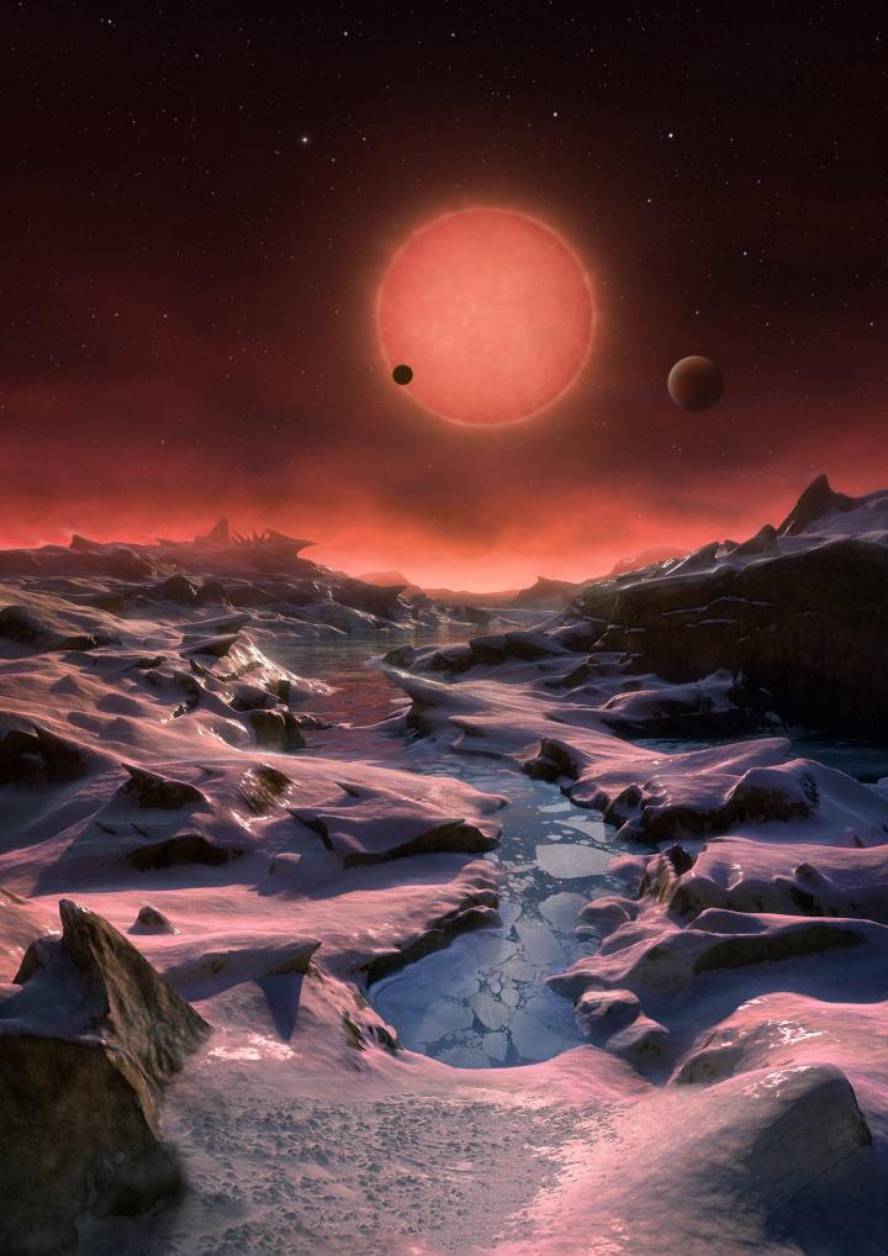Three inhabitable planets discovered near the Sun
At 40 light years from Earth, and around a dwarf and ultra-fast star, they have discovered three new exoplanets. In size and temperature similar to our planet. For those seeking life outside the Earth, they would be the most interesting planets ever found outside the Solar System.

Ultra-fast stars, with an effective temperature of less than 2700 kelvin, are very common in the Milky Way. They represent 15% of the population of astronomical objects near the Sun. But so far no planet was ever seen around them. On this occasion, however, three planets have been found to resemble Earth at temperature and size.
These planets have seen it with the telescope, located in Chile. From time to time they followed the footprint of a weak, red star, and on a regular basis, they saw the star's signal descending. This showed that between the star and the Earth several objects passed and showed that they were eclipses of three planets.
The planets orbiting around the dwarf and ultra-fast stars have a similar size to that of the Earth. Two of them revolve every 1.5 to 2.4 days around the star and the third between 4.5 and 73 days. “With this very small orbital period, the Earth is 20 to 100 times closer to the Sun,” said the researcher and author of the work of the Institute of Astrophysics and Geophysics of the University of Liège, Michael Gillon.
Although they are very close to the Star, only the first two planets receive between 2 and 4 times more radiation than the Earth, since their star is very weak and cold. Therefore, it is much hotter than on Earth, but it is possible that on its surface there are habitable zones of temperature. Since the orbital period is so small, it can be synchronized, as the Moon with the Earth. That would mean that the planets would always show the same face to their star and would have a colder face hidden.
“This can be a paradigm shift in the search for life in the Universe,” the researchers noted, “If we want to find life elsewhere in the Universe, we must begin to search for the planets surrounding ultra-fast dwarf stars.”
However, they must obtain data on the chemical composition of the atmosphere of the new exoplanets, in order to check for evidence of water and biological activity. It will help a lot to be a dwarf star, since if it were a big and strong star like ours, it would not be easy to highlight the small change that produce the atmospheres of these planets in the light emitted by the star.
It seems that the dwarf star TRAPPIST-1 is the one that emits the most light in the infrared, but according to the researchers this would not be a problem to create life, since some bacteria perform photosynthesis with sensitive pigments in the infrared.





